My Atari 800XL

History of my 800XL
Back in the late '90s my father came across a garage sale. It turns out, the man at this garage sale had an Atari 800XL, a Zenith monochrome monitor, a 1050 DSDD floppy disk drive, and several cases of floppies and manuals. Now days, such a thing can make mouths water. Of course back then such computers as the 800XL were just outdated trash, so the man offered to give it all away! For some reason, probably just to be nice, my dad offered him on the order of ten dollars for the whole setup. But of course, being outdated, my dad stuck the whole works in our attic for 15 years before I stumbled upon it. Okay, so what's the big deal? Well, this was the defining moment for me. The time my eyes landed on that old system was what started all of my collecting.So, anxious to get things working, I set the system up in the house and much to my dismay, the 1050 floppy disk drive died halfway through reading Pooyan. I will write more about the drive later. Essentially what ended up happening is I threw the drive and all of the disks back in the box and started to learn Atari basic, since that was the only thing that the computer could do.
Making It Useful
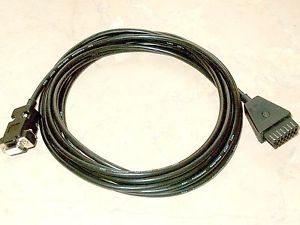 Naturally, basic was...well...basic. I got bored. So my curiosity lead me to eBay where I found this nifty thing. It is an RS232 (serial) to SIO (Atari Serial I/O) disk drive emulation cable. The most common program for Atari emulation was APE (Atari Peripheral Emulator), but I found a program called AspeQt (Atari Serial Peripheral Emulator for Qt) to be much easier to obtain and use for my purpose. I discovered an index of the pirated Homesoft's Disk Images from way back when, and began to build my own virtual collection and corresponding HTML index for it. Suddenly, for only 30 dollars I had myself every game ever made for the Atari 8-bit systems.
Naturally, basic was...well...basic. I got bored. So my curiosity lead me to eBay where I found this nifty thing. It is an RS232 (serial) to SIO (Atari Serial I/O) disk drive emulation cable. The most common program for Atari emulation was APE (Atari Peripheral Emulator), but I found a program called AspeQt (Atari Serial Peripheral Emulator for Qt) to be much easier to obtain and use for my purpose. I discovered an index of the pirated Homesoft's Disk Images from way back when, and began to build my own virtual collection and corresponding HTML index for it. Suddenly, for only 30 dollars I had myself every game ever made for the Atari 8-bit systems.
Peripherals
As I mentioned before, my Atari collection came with a 1050 disk drive. The thing used to work great, but one day it simply failed to do anything except get really hot. In the process of trying to fix it I managed to throw it out of alignment and damage one or more IC's. It's safe to say it's a fried mess to deal with another time! But I did end up discovering the likely cause of the original problem. Like many devices from that era, the rectifier portion of the power supply is built into the main case, and only the transformer (supplying AC) sits inside the external power supply. The rectifier circuit called for three 35 volt electrolytic capacitors rated at 4700 microfarad. At some point in the past, someone had replaced two of them with 25 volt caps, which did not completely stabilize the fluctuating current to DC, which caused the overheating symptoms on the voltage regulators and eventually the death of an important IC. Acoording to my responses on AtariAge, it could very well be the 6532 RIOT (RAM I/O Timer) that fried. But like I said before, fixing that drive is a task for another day.Recently I picked up a 410 casette tape drive. After rolling out a pretty sizable dent in the stainless logo plate, it was a pretty good looking player. The only major problem with it now is that all of the belts are dry-rotted. It can play and fast forward without a problem though, and for now I will just flip the tape over to rewind!
To read about the Zenith monochrome monitor that I mentioned earlier, look at the article about my TI99/4A, since that is the system I use it with.
Cartridges
My Atari 800XL came with 6 cartridges.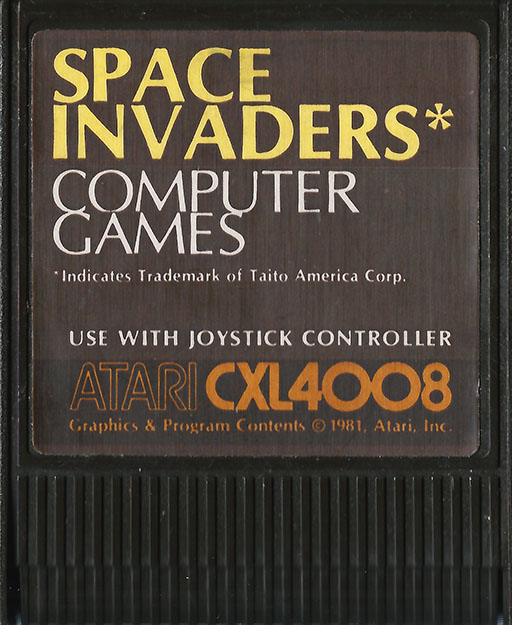
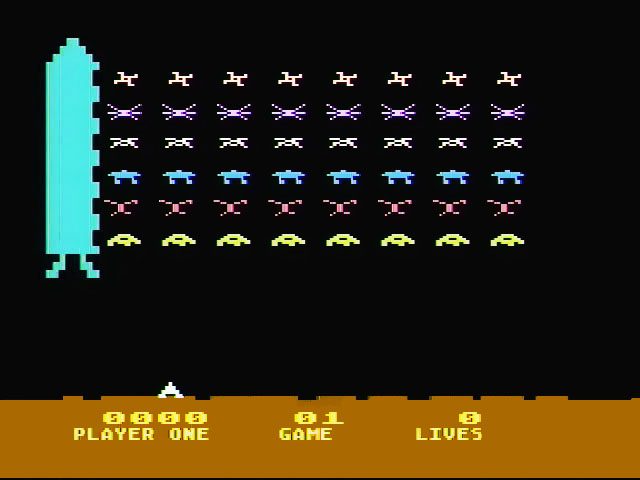 The first cart is obvious: Space Invaders. What is a classic computer without a copy of Invaders? This cart was manufactured by Taito America in 1981, and first made in 1979. The game functions like most other Invaders games for the most part, except the speed of the game is different. The invaders scroll onto the screen slowly, appearing to come out of a large mother-ship. Then they immediately proceed to wooping some serious butt. Funny enough, I switched the game to the hardest level and performed far better than I had on the last ten runs at level one.
The first cart is obvious: Space Invaders. What is a classic computer without a copy of Invaders? This cart was manufactured by Taito America in 1981, and first made in 1979. The game functions like most other Invaders games for the most part, except the speed of the game is different. The invaders scroll onto the screen slowly, appearing to come out of a large mother-ship. Then they immediately proceed to wooping some serious butt. Funny enough, I switched the game to the hardest level and performed far better than I had on the last ten runs at level one.

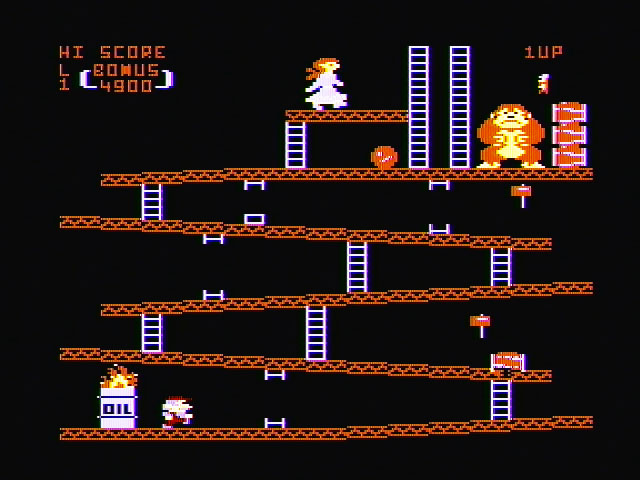 I also have an original Donkey Kong cartridge by Nintendo in 1983. This is the real deal, too. Classic, classic Donkey Kong. I am no gamer of course, because I can't beat the second level. Either way, I am glad I have this cartridge just because of how important it is to classic gaming history.
I also have an original Donkey Kong cartridge by Nintendo in 1983. This is the real deal, too. Classic, classic Donkey Kong. I am no gamer of course, because I can't beat the second level. Either way, I am glad I have this cartridge just because of how important it is to classic gaming history.

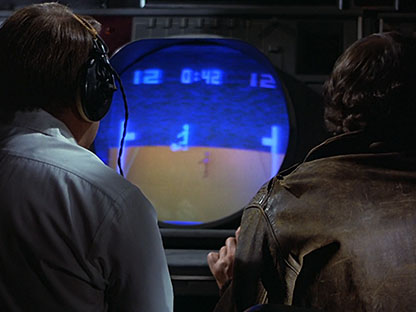 The next cart was featured for a few seconds during the movie
The next cart was featured for a few seconds during the movie 
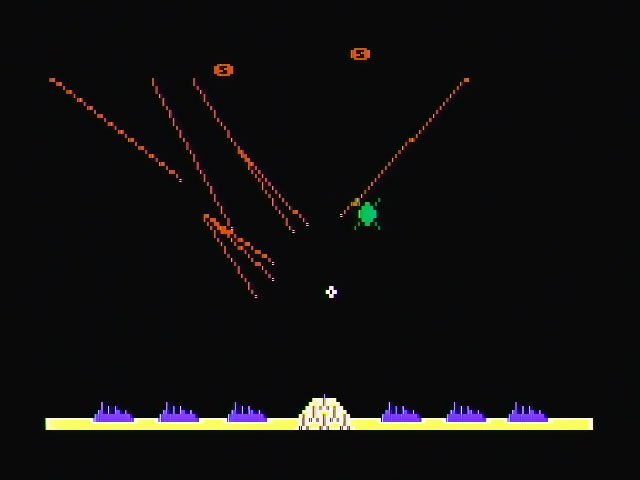 My Missile Command cartridge was also made by Atari. I don't have a lot to say about this one, it is pretty infuriating game. I don't recommend it if you have anger problems.
My Missile Command cartridge was also made by Atari. I don't have a lot to say about this one, it is pretty infuriating game. I don't recommend it if you have anger problems.

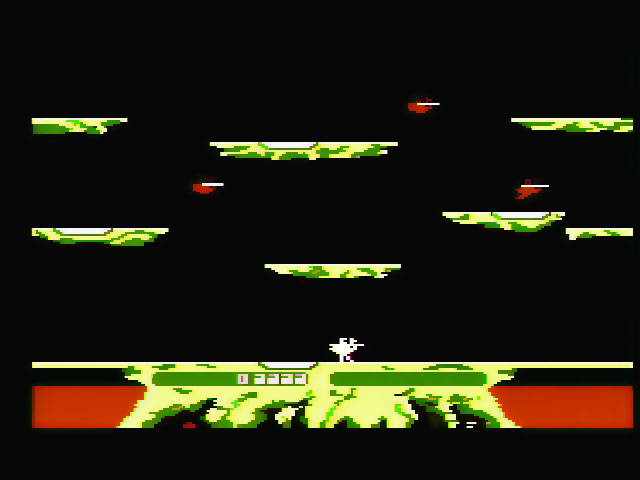 Similar to other Atari platformers, Joust is all about running around on platform levels killing enemies. Just to make it weird you're a duck... or something that looks an awful lot like a duck.
Similar to other Atari platformers, Joust is all about running around on platform levels killing enemies. Just to make it weird you're a duck... or something that looks an awful lot like a duck.
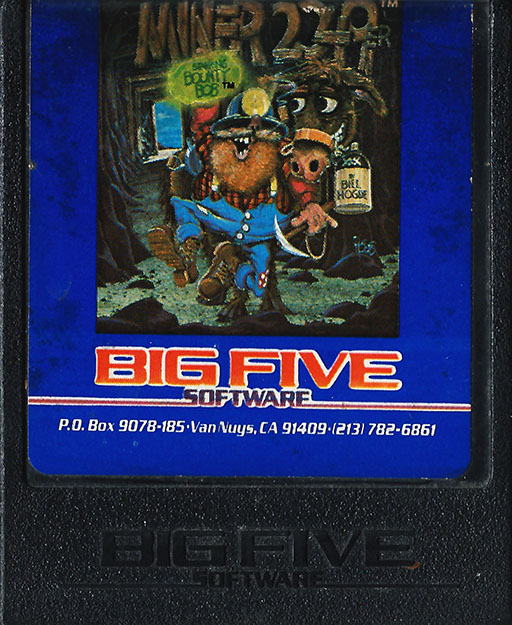
 The cartridge that I found the most fascinating and entertaining was Miner 2049er by the Big Five Software company. I was curious about the title, so I looked them up. It turns out, Big Five was a group of young computer fanatics that got together and made some serious cash! To make it better,
The cartridge that I found the most fascinating and entertaining was Miner 2049er by the Big Five Software company. I was curious about the title, so I looked them up. It turns out, Big Five was a group of young computer fanatics that got together and made some serious cash! To make it better, 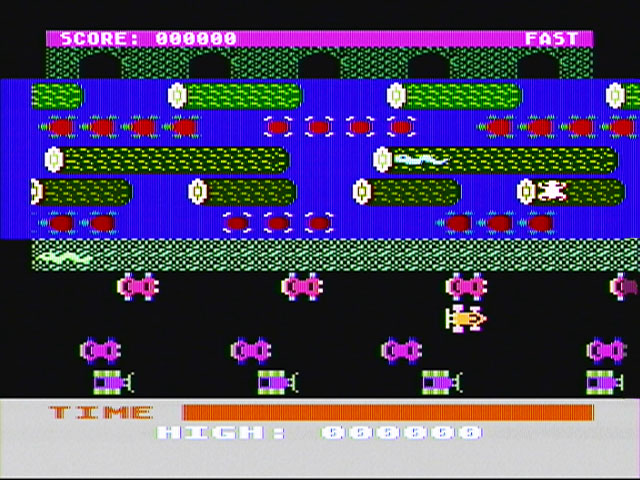 My favorite game for this console is definitely Frogger. Not just because Frogger was the first game I played, but because in comparison to Frogger on other classic consoles, this one is easily the best. The music is fantastic, and the graphics are just right. Not too good, but not Atari 2600 garbage, and very colorful. I find that a lot of classic game companies got into the habit of making games with black backgrounds. It was an arcade style, and it did prevent screen burn-in in the good old days, but man, the outcome was boring. But like I said, this music is the stuff:
My favorite game for this console is definitely Frogger. Not just because Frogger was the first game I played, but because in comparison to Frogger on other classic consoles, this one is easily the best. The music is fantastic, and the graphics are just right. Not too good, but not Atari 2600 garbage, and very colorful. I find that a lot of classic game companies got into the habit of making games with black backgrounds. It was an arcade style, and it did prevent screen burn-in in the good old days, but man, the outcome was boring. But like I said, this music is the stuff:
 The ESP8266 and ESP8285 can run your Arduino code directly, in many cases with more program space, more RAM, and a faster CPU.
The ESP8266 and ESP8285 can run your Arduino code directly, in many cases with more program space, more RAM, and a faster CPU.
 Squirrel lighting controller utilizes Wi-Fi microcontrollers to vary the color and brightness of multiple Wi-Fi-enabled LED light bulbs.
Squirrel lighting controller utilizes Wi-Fi microcontrollers to vary the color and brightness of multiple Wi-Fi-enabled LED light bulbs.
 Is the volume adjustment stuck or faulty on your Ford radio? This is a technical guide to a potential fix.
Is the volume adjustment stuck or faulty on your Ford radio? This is a technical guide to a potential fix.
 This article covers how to take multiple bootable ISO images and create a single bootable USB key for all of them.
This article covers how to take multiple bootable ISO images and create a single bootable USB key for all of them.
 Are you sick and tired of IDEs? This tutorial will show you how to configure Notepad++ macros to compile your code, so you can ditch big IDEs forever.
Are you sick and tired of IDEs? This tutorial will show you how to configure Notepad++ macros to compile your code, so you can ditch big IDEs forever.
 This article is the hub for my collection of classic computers. From this page you can see the story behind each of my systems, their specifications, screen shots, and more.
This article is the hub for my collection of classic computers. From this page you can see the story behind each of my systems, their specifications, screen shots, and more.
 The NVidia GeForce GT 7800 has an issue with its cooling fan circuitry that causes it to get stuck at max speed. This article covers removing a faulty transistor from the device to circumvent this issue.
The NVidia GeForce GT 7800 has an issue with its cooling fan circuitry that causes it to get stuck at max speed. This article covers removing a faulty transistor from the device to circumvent this issue.
 Are you tired of the painful speed of Windows Vista? This article covers a number of simple ways to improve your desktop performance.
Are you tired of the painful speed of Windows Vista? This article covers a number of simple ways to improve your desktop performance.
 This article explains the game that everyone seems to be talking about, Minecraft.
This article explains the game that everyone seems to be talking about, Minecraft.